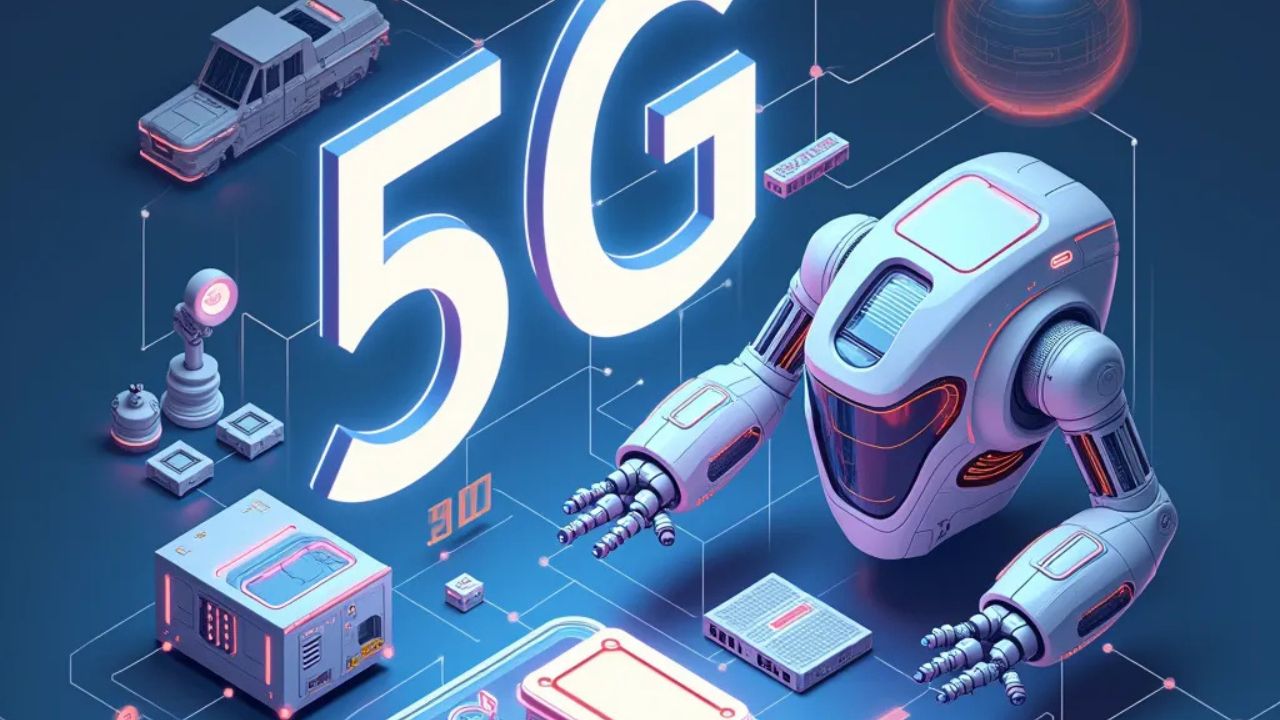What is 5G Technology?
5G technology represents the fifth generation of wireless communication, designed to drastically enhance connectivity and provide a platform for innovative applications across various sectors. Unlike its predecessor, 4G, which primarily focused on mobile broadband, 5G is engineered to support a wide array of services, including the Internet of Things (IoT), autonomous vehicles, and smart cities. Its architecture is fundamentally different from previous generations, featuring a combination of advanced technologies that culminate in superior performance.
One of the most notable characteristics of 5G is its ability to deliver significantly faster data transmission speeds. While 4G offered speeds up to 1 Gbps, 5G has the potential to reach speeds exceeding 10 Gbps under ideal conditions. This leap in speed not only allows for smoother streaming of high-definition content but also facilitates real-time data processing essential for applications such as augmented reality and virtual reality.
Another critical aspect of 5G is its remarkably low latency, which can be as low as 1 millisecond compared to the approximately 30-50 milliseconds typical of 4G networks. This minimal delay is crucial for applications that require instant feedback, such as remote surgery or immersive gaming experiences, positioning 5G as a transformative force in connectivity.
In terms of capacity, 5G networks can support a vast number of simultaneous connections. This capability is essential as the number of connected devices continues to grow exponentially. To facilitate these advancements, 5G employs a range of technologies, including millimeter waves, small cell deployments, and advanced antenna systems like Massive MIMO (Multiple Input Multiple Output). These components work in unison to create a denser network capable of catering to the increasing demand for data, ultimately paving the way for a more interconnected future.

Benefits and Applications of 5G Technology
5G technology stands as a fundamental advancement in the realm of connectivity, offering numerous benefits and applications across multiple industries. One of the most significant advantages is its ability to enhance mobile broadband services. With higher data speeds and lower latency, users can experience seamless streaming, faster downloads, and an overall improved user experience. This improvement in mobile connectivity also facilitates high-definition video calling and augmented reality applications, ultimately transforming the way individuals communicate and consume content.
It also plays a crucial role in the expansion of the Internet of Things (IoT). With its ability to support a massive number of simultaneously connected devices, this technology enables smart homes and cities to operate more efficiently. For example, smart traffic management systems can analyze real-time data to optimize traffic flows, thereby reducing congestion and emissions. Furthermore, in energy management, 5G can facilitate more effective systems for monitoring and controlling energy consumption.
In the automotive industry, this technology is essential to enable connectivity for autonomous vehicles. These vehicles require constant data exchange with infrastructure and other vehicles to ensure safety and efficiency on the road. Low latency makes real-time communication possible, enabling faster decision-making and improved navigation capabilities.
Additionally, remote healthcare services have been significantly improved by 5G technology. Medical professionals can access and share critical patient data in real-time, leading to faster diagnosis and treatment. This capability is particularly valuable in emergency situations or for patients living in remote areas.
Industries such as manufacturing and agriculture are also reaping the benefits of 5G technology. Augmented reality applications can streamline training processes and maintenance repairs in manufacturing, while real-time data sharing allows farmers to monitor crop health and optimize resource use effectively. Overall, the transformative potential of this 5G technology is immense, paving the way for advancements and efficiencies that are likely to redefine both business operations and everyday life.
Challenges and Concerns of 5G Implementation
The deployment of 5G technology presents a variety of challenges and concerns that need to be addressed to realize its full potential. One of the most pressing issues is the high costs associated with developing the necessary infrastructure. Unlike previous generations, it requires a dense network of small cell towers and antennas, which requires significant financial investment. Telecom providers face the challenge of balancing these expenses while maintaining affordable service for consumers. In addition, the integration of 5G technology requires an upgrade of existing networks, which puts additional pressure on financial resources.
Regulatory hurdles also pose a significant barrier to 5G deployment. Different countries, states, and municipalities have varying regulations, which can impede the rapid deployment of the necessary infrastructure. Navigating these regulatory landscapes can delay projects and complicate coordination between federal and local authorities. As countries rush to adopt the technology, it is crucial to streamline approval processes to facilitate rapid implementation.
Public apprehension regarding potential health risks associated with 5G technology cannot be overlooked. While extensive studies conducted by health organizations have generally indicated that 5G frequencies do not pose significant health risks, public skepticism persists. Concerns about exposure to electromagnetic fields (EMFs) and potential long-term effects contribute to widespread hesitance regarding new technology.
Moreover, the rollout of 5G exacerbates the digital divide that exists globally. Areas that are already underserved may find themselves further marginalized as rapid advancements in technology leave them behind. The benefits of improved connectivity will be unevenly distributed, highlighting the need for strategic planning to ensure equitable access. Addressing these challenges is essential for maximizing the advantages of 5G technology while protecting public interests.

The Future of 5G and Beyond
As we look towards the horizon of mobile connectivity, the future of 5G technology appears poised for remarkable advancements and innovations. Current projections suggest that applications leveraging 5G capabilities will expand significantly, particularly in areas such as internet of things (IoT), autonomous vehicles, and smart cities. These developments will be facilitated by the increased bandwidth and reduced latency that 5G networks promise, thereby allowing for swift data transmission and real-time processing. One of the most significant enhancements on the way is the integration of artificial intelligence (AI) and machine learning in network management
By employing AI algorithms, network operators can optimize performance, predict failures, and dynamically allocate resources, leading to enhanced user experiences. The synergy between 5G and AI may yield intelligent applications that can learn from data trends, thereby providing predictive analytics in various sectors such as healthcare and manufacturing. This blend of technology is expected to drive automation, improve efficiency, and foster intelligent decision-making.
Moreover, as we venture into a post-5G world, the groundwork is already being laid for the development of 6G technology. While it might seem a distant reality, initial research indicates that 6G could emerge by 2030. This next generation could boast connections surpassing 100 gigabits per second, accompanied by advancements like holographic communications and pervasive AI-driven systems. The potential for faster, more reliable connectivity will further redefine how we interact with the digital world.
Thus, the future landscape of mobile communications is vibrant with possibilities, as 5G technology continues to evolve. The exciting journey towards a more interconnected society is just beginning, revealing a realm of opportunities that will change how we live, work, and communicate. The horizon is filled with promise, and while challenges remain, the path forward is illuminated by the advancements that lie ahead.
Conclusion
In conclusion, 5G technology represents a monumental shift in the world of connectivity, offering unprecedented speed, low latency, and the ability to support a vast array of devices simultaneously. Its transformative potential spans industries such as healthcare, automotive, agriculture, and beyond, ushering in innovations like autonomous vehicles, smart cities, and enhanced mobile broadband.
While challenges such as infrastructure costs, regulatory hurdles, and public concerns remain, the benefits far outweigh the obstacles. As 5G continues to evolve and pave the way for future technologies like 6G, its impact on our daily lives and industries will be profound, creating a more efficient, connected, and intelligent world.
FAQ: Understanding 5G Technology
What is it?
It is the fifth generation of wireless communication technology, designed to provide faster speeds, lower latency and support a large number of connected devices, enabling advanced applications such as IoT, autonomous vehicles and smart cities.
How is 5G different from 4G?
5G offers significantly faster data transmission speeds (up to 10 Gbps compared to 1 Gbps for 4G), lower latency (as low as 1 millisecond), and the ability to support many more devices simultaneously.
What are the benefits?
Benefits include faster internet speeds, better connectivity, low latency, support for IoT devices, better streaming, improved mobile broadband, and innovations like smart cities and autonomous vehicles.
How does it impact ordinary users?
For everyday users, it will deliver faster downloads, smoother streaming, more reliable video calls, and better connectivity to smart devices at home and on the go.
Which sectors will benefit?
Sectors such as healthcare, automotive, agriculture, manufacturing and entertainment will benefit through innovations in telemedicine, autonomous vehicles, smart agriculture, industrial automation and immersive experiences.
Are there any concerns or challenges with 5G?
Yes, some of the main concerns include high infrastructure costs, regulatory hurdles, potential cybersecurity vulnerabilities, and public apprehension about the health effects of signals, although studies have shown minimal risk.
How it supports the Internet of Things (IoT)?
It allows a larger number of devices to connect simultaneously with faster and more reliable communication, making IoT applications such as smart homes, smart cities and industrial automation more effective.
What role does 5G play in autonomous vehicles?
It enables real-time communication between vehicles and infrastructure with its low latency, which is essential for the safety and efficiency of autonomous driving systems.
Is it available everywhere?
While it’s being rolled out globally, it’s not yet available everywhere. Urban areas are getting 5G coverage the fastest, but rural areas may experience delays due to infrastructure challenges.
What is the future of 5G?
The future includes expanded global coverage, greater integration with AI and edge computing, and the development of 6G technology, which can offer even faster speeds and advanced applications such as holographic communications.
More about 5G.



